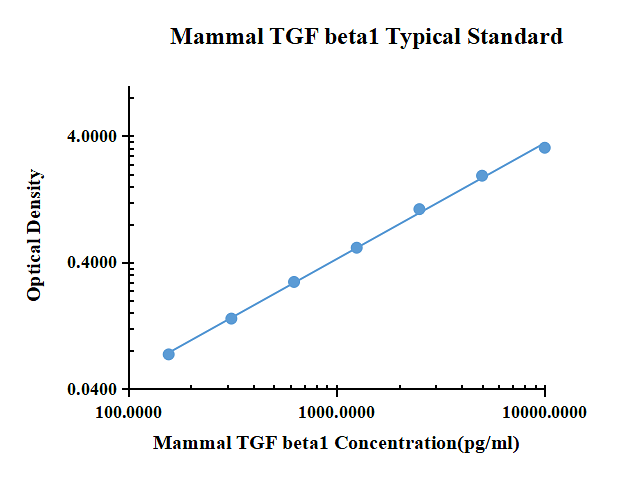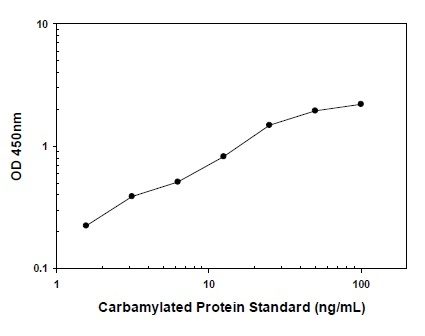Human/Mouse/Rat/Porcine/Canine TGF-β1 ELISA Kit
CAT.NO. : AEH0012
RMB Please choose
RMB Please choose
Size:
Trail, Bulk size or Custom requests Please contact us
*产品价格可能会有所调整,请以品牌方官网实时更新的价格为准,以确保准确性。
Background
Transforming Growth Factor Beta 1, 2, and 3 (TGF-beta 1, TGF-beta 2, and TGF-beta 3) are highly pleiotropic cytokines that virtually all cell types secrete. TGF-beta molecules are proposed to act as cellular switches that regulate processes such as immune function, proliferation, and epithelial-mesenchymal transition. Targeted deletions of these genes in mice show that each TGF-beta isoform has some non-redundant functions: TGF-beta 1 is involved in hematopoiesis and endothelial differentiation; TGF-beta 2 affects development of cardiac, lung, craniofacial, limb, eye, ear, and urogenital systems; and TGF-beta 3 influences palatogenesis and pulmonary development. The full range of in vitro biological activities of TGF-beta 5 has not yet been explored. However, TGF-beta 1, TGF-beta 2, TGF-beta 3, and TGF-beta 5 have been found to be largely interchangeable in an inhibitory bioassay, and it is anticipated that TGF-beta 5 will show a spectrum of activities similar to the other TGF-beta family members. To date, the production of TGF-beta 5 has only been demonstrated in Xenopus.
- TGF-beta ligands are initially synthesized as precursor proteins that undergo proteolytic cleavage. The mature segments form active ligand dimers via a disulfide-rich core consisting of the characteristic 'cysteine knot'. TGF-beta signaling begins with binding to a complex of the accessory receptor betaglycan (also known as TGF-beta RIII) and a type II serine/threonine kinase receptor termed TGF-beta RII. This receptor then phosphorylates and activates a type I serine/threonine kinase receptor, either ALK-1 or TGF-beta RI (also called ALK-5). The activated type I receptor phosphorylates and activates Smad proteins that regulate transcription. Use of other signaling pathways that are Smad-independent allows for distinct actions observed in response to TGF-beta in different contexts.
Typical data

| pg/ml | O.D. | Average | Corrected | |
| 0 | 0.0886 | 0.0786 | 0.0836 | |
| 156.25 | 0.1488 | 0.1692 | 0.159 | 0.075 |
| 312.5 | 0.2321 | 0.2237 | 0.2279 | 0.1439 |
| 625 | 0.3551 | 0.3739 | 0.3645 | 0.2805 |
| 1250 | 0.5891 | 0.6252 | 0.6072 | 0.5232 |
| 2500 | 1.1123 | 1.1675 | 1.1399 | 1.0559 |
| 5000 | 1.9813 | 2.0695 | 2.0254 | 1.9414 |
| 10000 | 3.3531 | 3.2747 | 3.3139 | 3.2299 |
Precision
| Intra-assay Precision | Inter-assay Precision | |||||
| Sample Number | S1 | S2 | S3 | S1 | S2 | S3 |
| 22 | 22 | 22 | 6 | 6 | 6 | |
| Average(pg/ml) | 195 | 1090.8 | 3619.9 | 237.3 | 1154.4 | 3711.7 |
| Standard Deviation | 10.3 | 67.7 | 202.6 | 16.3 | 67.5 | 144.7 |
| Coefficient of Variation(%) | 5.3 | 6.2 | 5.6 | 6.8 | 5.8 | 3.9 |
Intra-assay Precision (Precision within an assay) Three samples of known concentration were tested twenty times on one plate to assess intra-assay precision.
Inter-assay Precision (Precision between assays) Three samples of known concentration were tested six times on one plate to assess intra-assay precision.
Spike Recovery
The spike recovery was evaluated by spiking 3 levels of mammal TGF beta1 into health serum sample. The un-spiked serum was used as blank in this experiment.
The recovery ranged from 88% to 105% with an overall mean recovery of 99%.
The recovery ranged from 88% to 105% with an overall mean recovery of 99%.
Sample Values
| Sample Matrix | Sample Evaluated | Range (ng/ml) | Detectable (%) | Mean of Detectable (ng/ml) |
| Serum | 30 | 35.3-74.7 | 100 | 58.4 |
Serum/Plasma – Thirty samples from apparently healthy volunteers were evaluated for the presence of TGF-β1 in this assay. No medical histories were available for the donors.
 New Products
New Products




 Protocol Booklet
Protocol Booklet













